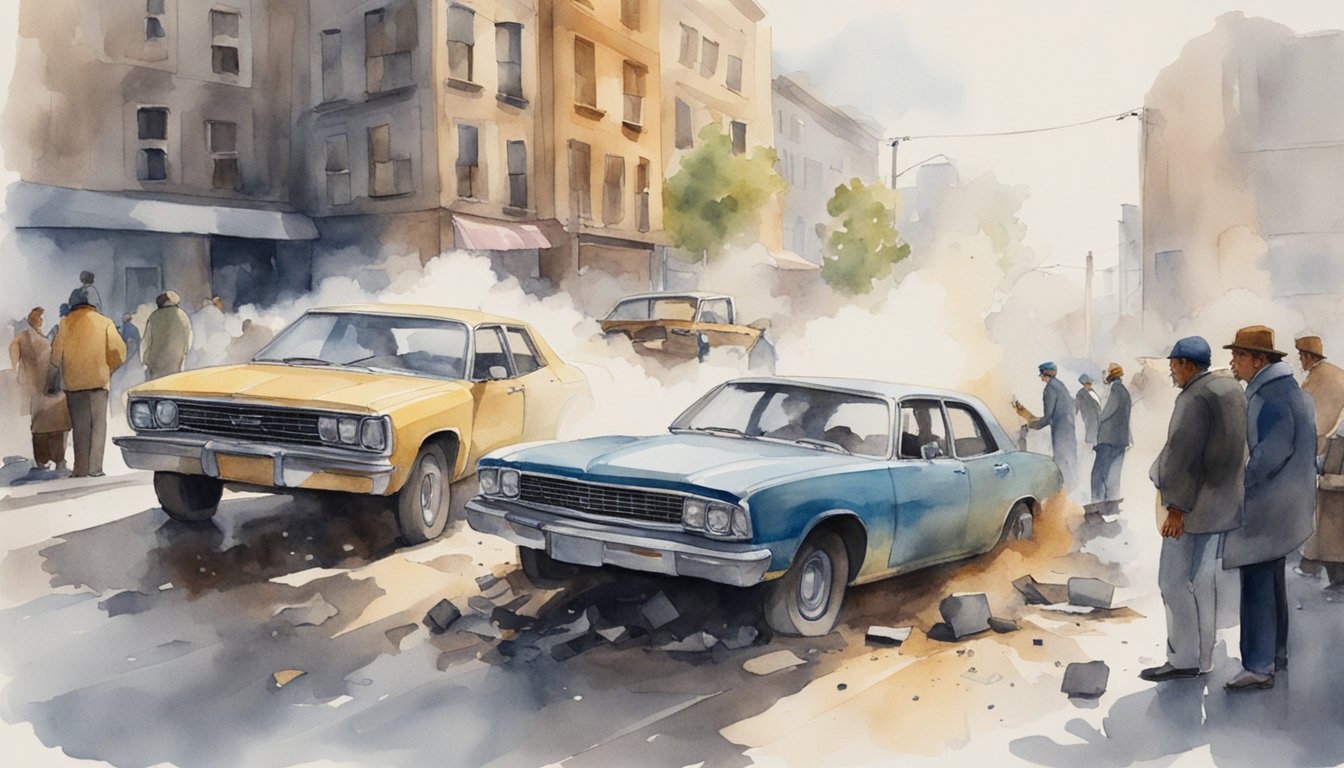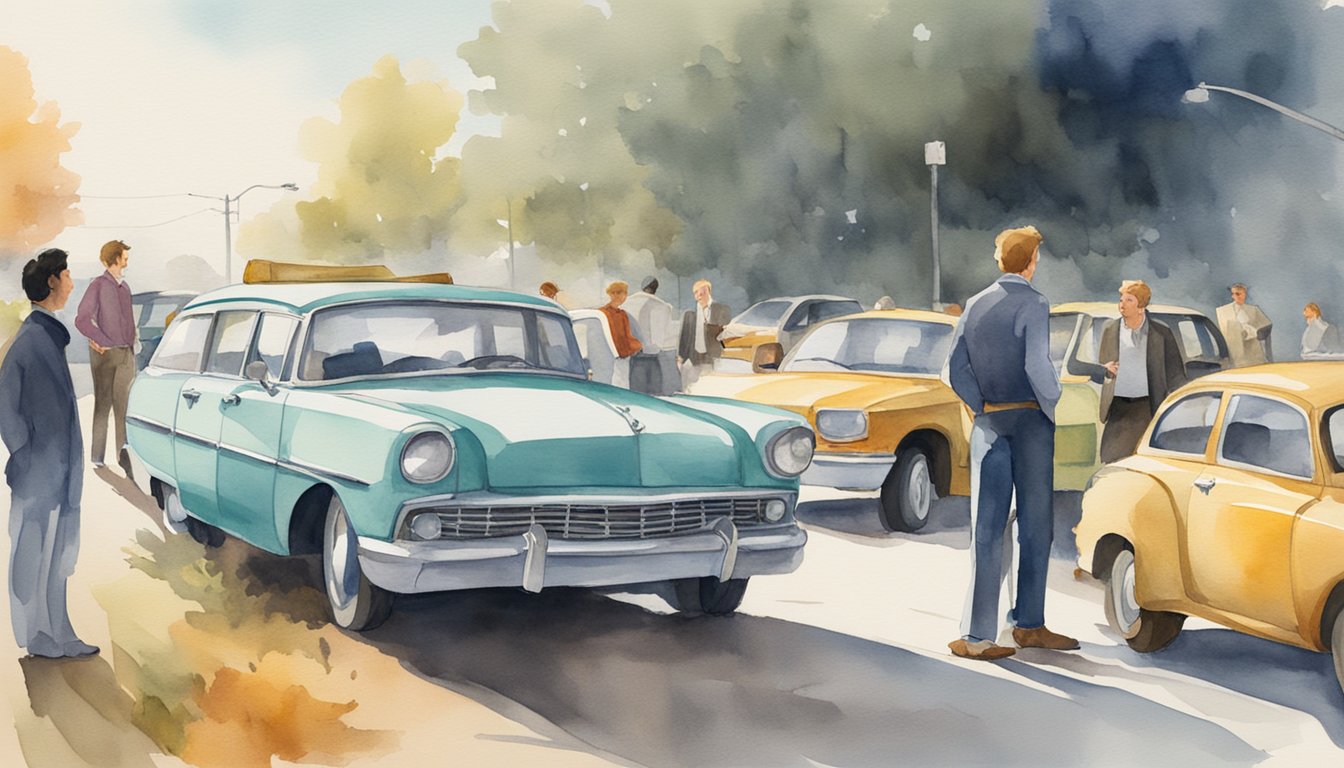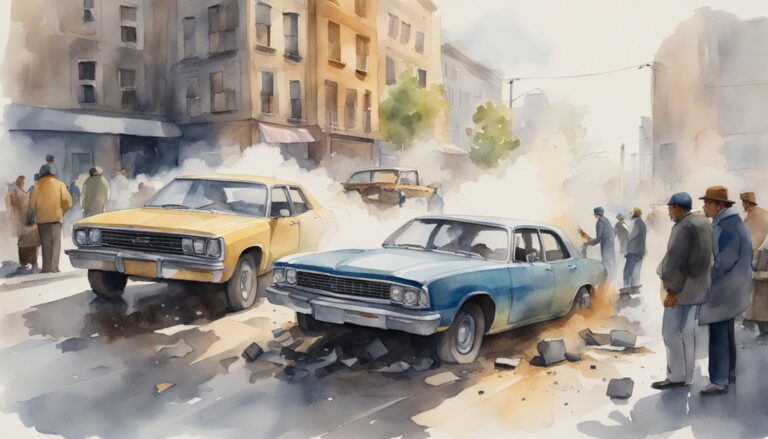Understanding Insurance Terms
Auto insurance can be confusing with all its terms and conditions.
Knowing the meanings of key terms like deductibles, coverages, and liability can help you make better decisions about your insurance.
What Does ‘Deductible’ Mean?
A deductible is the amount you pay out of pocket before your insurance starts to cover costs.
If you have an accident and your repair bill is $2,000, and your deductible is $500, you will pay $500, and your insurance will cover the remaining $1,500.
The higher your deductible, the lower your premium tends to be.
Choosing a deductible involves balancing what you can afford to pay out of pocket against how much you want to spend on your monthly payment.
Comprehensive vs Collision Coverage
Collision coverage pays for damage to your car from accidents, regardless of who is at fault.
It covers events like crashing into another car or hitting a stationary object.
This type of insurance is usually needed if you are financing or leasing a vehicle.
Comprehensive coverage covers non-collision-related incidents like theft, fire, or natural disasters.
Together, these two coverages are often part of what is called full coverage insurance.
Both types have deductibles you must pay before your insurance covers the rest.
Liability Insurance Explained
Liability insurance covers damages you cause to other people or property in an accident where you are at fault.
There are two parts: bodily injury liability, which covers medical expenses for injured parties, and property damage liability, which pays for damages to someone else’s property.
Most states require drivers to have a minimum amount of liability coverage.
Depending on your needs, you can choose to carry higher limits to protect yourself from lawsuits or high out-of-pocket costs.
Liability does not cover damages to your own car; that’s where collision and comprehensive coverage come in.
Understanding these terms helps you make more informed decisions regarding your auto insurance policies.
Balancing the right amount of coverage, deductible, and premium is essential for protecting yourself financially.
Insurance Coverage and Claims
Understanding insurance coverage and the claims process is crucial when dealing with accidents, total loss, and premiums.
This section addresses the important steps and considerations involved in each.
Filing a Claim
When involved in an accident, the first step is to file a claim with your insurance company.
Gather all necessary information including photos of the damage, police reports, and any other relevant documents.
Contact your insurance provider promptly.
Your insurance company will send an adjuster to assess the damage and determine the cost of repairs.
You will need to pay your deductible before the insurance covers the rest.
Make sure to keep receipts for all related expenses, as they may be reimbursed.
Dealing with Total Loss
In the case of a total loss, where the cost of repairs exceeds the value of your vehicle, your insurer will reimburse you for the actual cash value of your car.
This value is determined by the insurer and may not always match what you owe on the vehicle if it’s financed or leased.
You will need to settle this with your lender.
If your insurance coverage includes gap insurance, it will cover the difference between the car’s value and the amount owed.
A total loss can result from various incidents, including accidents, theft, fire, or vandalism.
Understanding Premiums and Limits
Premiums are the amount you pay regularly to maintain your insurance coverage.
These can vary based on several factors, including your driving history, the type of vehicle, and the coverage limits you choose.
Limits are the maximum amount your insurer will pay for a covered event.
Higher limits mean better protection but can also result in higher premiums.
It is essential to balance between the coverage you need and what you can afford.
Being aware of your policy details helps you make informed decisions to protect your finances and property.
Practical Insurance Scenarios

Understanding how collision coverage works in various situations can help you make more informed decisions about your insurance needs.
This section explores real-world examples, unusual events that might be covered, and key related insurance terms.
Examples of Car Insurance in Practice
Collision insurance is essential for cases where your vehicle is damaged in an accident involving another car or object, like a pothole.
If you are at fault, your collision insurance will cover repairs up to the vehicle’s cash value.
In a hit-and-run, if you have collision insurance, you can still file a claim to cover the damages.
Meanwhile, full coverage, which includes both collision and comprehensive insurance, offers broader protection.
Coverage for Unconventional Events
Apart from standard collisions, certain scenarios might also be covered.
For example, collision insurance often covers damage caused by hitting a tree or guardrail.
Comprehensive insurance covers losses not related to accidents, such as damage by falling objects, floods, or vandalism.
If an animal, like a deer, causes a collision, comprehensive insurance would typically cover it.
Related Insurance Terms
Knowing related terms can clarify your options.
For example, uninsured motorist coverage protects you in an accident where the other driver lacks insurance.
Similarly, underinsured motorist coverage helps if the opposing driver’s insurance isn’t enough to cover your losses.
If your vehicle is older, you might consider dropping collision coverage, as the cost of premiums could exceed the car’s value.
Optional coverages like rental reimbursement can be added to cover rental costs while your car is being repaired.
Frequently Asked Questions

Understanding collision coverage is important to protect your vehicle in specific situations.
This section addresses common questions about when to maintain or drop collision coverage, differences from comprehensive coverage, and factors affecting cost and deductible choices.
At what point should I consider dropping collision coverage on my vehicle?
You might consider dropping collision coverage when the annual premium exceeds 10% of your vehicle’s value.
Evaluate the vehicle’s current market worth and your budget.
If repairs might cost more than the car’s value, it could be time to drop the coverage.
How is collision coverage different from comprehensive coverage?
Collision coverage pays for damage from accidents that involve hitting another car or object.
In contrast, comprehensive coverage handles events like theft, vandalism, fire, and natural disasters.
Both types of coverage serve different purposes and are typically optional.
What factors determine the cost of collision coverage?
Several factors determine collision coverage costs.
Your driving record, vehicle make and model, and where you live can influence the premium.
Insurers also consider the age of your vehicle, your deductible choice, and claim history when calculating rates.
What are the implications of selecting a higher deductible for collision coverage?
Choosing a higher deductible can lower your premium, but it means higher out-of-pocket costs if you file a claim.
Assess your ability to pay the deductible in the event of an accident.
A balance between affordable premiums and manageable deductibles is ideal.
Is it advisable to maintain collision insurance on an older vehicle, such as one that is 10 years old?
Maintaining collision insurance on an older vehicle depends on its value and your willingness to pay repair costs.
For a car worth less than $2,000, it may not be cost-effective to keep collision coverage.
As cars depreciate, the decision to keep coverage should be reassessed.
In the absence of collision coverage, what risks do I face in the event of an accident?
Without collision coverage, you bear the full cost of repairs or replacement of your vehicle after an accident where you are at fault.
This can lead to significant financial strain.
It’s important to consider your financial situation and risk tolerance when deciding whether to maintain this coverage.






